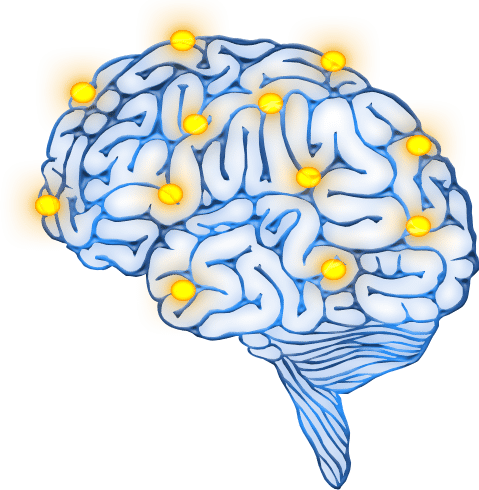Neuroplasticity – What’s The Evidence?
by Brie Darcy, PT, DPT

Neuroplasticity – maybe you’ve heard the term, but what does it mean?
Neuroplasticity is the brain’s ability to modify, change, and adapt (both structure and function) throughout life in response to experience or following injury. (In other words, it is the brain’s ability to change in response to its environment.) Clear as mud, right?!
The concept of neuroplasticity has come a long way in recent decades. Historically, researchers believed that changes in the brain (i.e., neuroplasticity) could only take place during infancy and childhood. In other words, it was thought that the structure of the brain was set (and essentially unmodifiable) by adulthood. Moreover, since we lose neurons (the fundamental cells that make up the brain) as we age, brain function was basically just a slow, downward spiral. Yikes! Thankfully, building evidence gathered in the 20th century (much of which resulted from lessons and studies with individuals recovering from neurological injuries) has since shown that the adult brain is ALSO capable of changing and adapting. While much about the human brain is still very much a mystery, it is relatively agreed upon that there are 2 ‘types’ of neuroplasticity – structural and functional.
Structural neuroplasticity refers to the brain’s ability to change its physical structure as a result of learning. Functional neuroplasticity describes the neurons’ ability to change their function (in other words, to move functions from a damaged to non-damaged part of the brain).
Let’s take a look at a few examples of neuroplasticity in action:
Taxi drivers and Neuroplasticity
Have you ever been impressed by taxi drivers’ navigational skills – even in complex cities? Researchers decided to look more closely at this skill set and conducted a research study on taxi drivers in London. In London, taxi drivers undergo extensive training and pass rigorous examinations before becoming licensed. In this study, researchers reviewed structural MRIs of taxi drivers and compared them to the brains of individuals that did not drive taxis. They found that the area of the brain which stores spatial representations of the environment was larger in the taxi drivers. Additionally, the volume of this area of the brain correlated with time spent as a taxi driver. Essentially, their brains adapted to meet their everyday needs! This study’s findings have become a commonly cited example of neuroplasticity at work.
Musicians and Neuroplasticity
Multiple studies have demonstrated both structural and functional reorganization in the brains of musicians compared to non-musicians. Additionally, these changes appear related to the age in which musical training began, the number of years of musical training, and the training intensity. Moreover, they found that these brain changes may further influence their cognitive functioning including improved visual attention and verbal memory. Structural brain changes have also been found to occur in response to second language acquisition.
Rehabilitation and Neuroplasticity
Much of the evidence surrounding neuroplasticity has centered on recovering lost functions after an injury to the brain. A pivotal study on this topic looked at functional MRI’s of individuals before and after participation in a rehabilitation technique called constraint-induced movement therapy (CIMT). CIMT is a specialized rehabilitation approach used to strengthen a weakened limb. The training involves constraining the unaffected (i.e., stronger) limb and performing targeted, intense therapy with the weakened limb. MRI results after participation in this program showed promising evidence of increased activity in focused regions of the brain. This phenomenon is commonly referred to as ‘rewiring the brain.’
These examples (and many others) provide fuel to emphasize that our brains can adapt and modify themselves to meet new circumstances. Stay tuned for more information on this topic as we explore the concept of neuroplasticity as it relates to stroke and brain injury in greater detail in future blogs.
